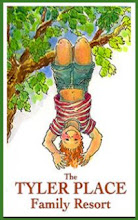By Ted Tyler
In those days we probably had as many outdoor “picnics” in the winter as in the summer. You can build a fire anywhere in snow (or even on the ice) if you know how to do it. One of the greatest draws for such a cookout would occur when the rivers that flow into Missisquoi Bay froze over. Perhaps it would be late December or early January, the ice conditions (except in spots in a protected place like Kingfisher Bay) poor because of snow cover or wind when the freeze occurred or a mixture of snow and freezing rain. A cold snap, frigid enough to freeze the previously ice-free rivers (usually Rock River in our case), would occur. We would pile onto a sled or sleds some newspaper, kindling, an axe or saw (dry wood could always be found on-site), a pot and something to cook in it. Then off we would go, skating as many miles as we chose up the river, hauling anyone too young for the effort on sleds behind. When the urge came a fire would be built, a stick or sticks or snag on a fallen log arranged from which to hang the pot over the fire – and voila, hot soup or stew or whatever provender we had. (Advice for the inexperienced: don’t use metal cups or bowls to eat from. They may be unbreakable, but you’ll burn the skin off your lips.)
The nostalgic odor of that hot soup on a cold day conjures up another family winter activity that has lasted to this day: Fox and Hounds. The starting point for our version of this game was our house, and it was best played after a new snow. One amongst us volunteered or was chosen by lot to be the fox, and off the fox trotted, burdened only by a small backpack with some newspaper, matches and a little kindling. Probably most of you know how this goes: after a wait of 5 or 10 minutes to give the fox a fair head start, the hounds (in our case bearing a pot or two and some comestibles to heat therein) proceed to track Reynard. Now the qualities required of our Reynard were a fair amount of agility and athleticism, as well as a guileful and somewhat devious mind. In fresh snow it’s not easy to mislead a posse of trackers, but it can be done. Backtracking carefully in one’s own footsteps to a place where there’s a bare rock close by – and then a jump (perhaps augmented by a sapling to grab and swing from) can slow the hounds down considerably. Getting into a patch of neighboring trees and abandoning ground travel at all for a rod or two also works well. Another gambit is walking around a large circle several times – making it difficult to spot where the fox departed the circle for parts unknown. One way for the hounds to circumvent these tricks was to spread out in their pursuit – but this often created a problem for them: are these the fox’s footprints or one of my fellow hound’s – or maybe, my own?! Note the fox spent as much time in the woods as possible – these subterfuges don’t work so well in an open field.
In any event, after a half mile or so the fox would pick a suitable secluded spot, gather some wood and get the picnic end of the proceedings underway by starting a (non-smoky) fire. Sooner or later the hounds would show up, if only because they could smell the fire.
Fast forward some years to the next generation (we’re talking the sixties here). I’m the fox. My kids are the hounds. After some of the tricks described above, I come back to the house on a cold winter’s day by another door from a different direction, pour myself some cocoa and watch out the window as my offspring struggle through waist-deep snow. What a meanie! And didn’t they let me know it!
To be continued.


No comments:
Post a Comment